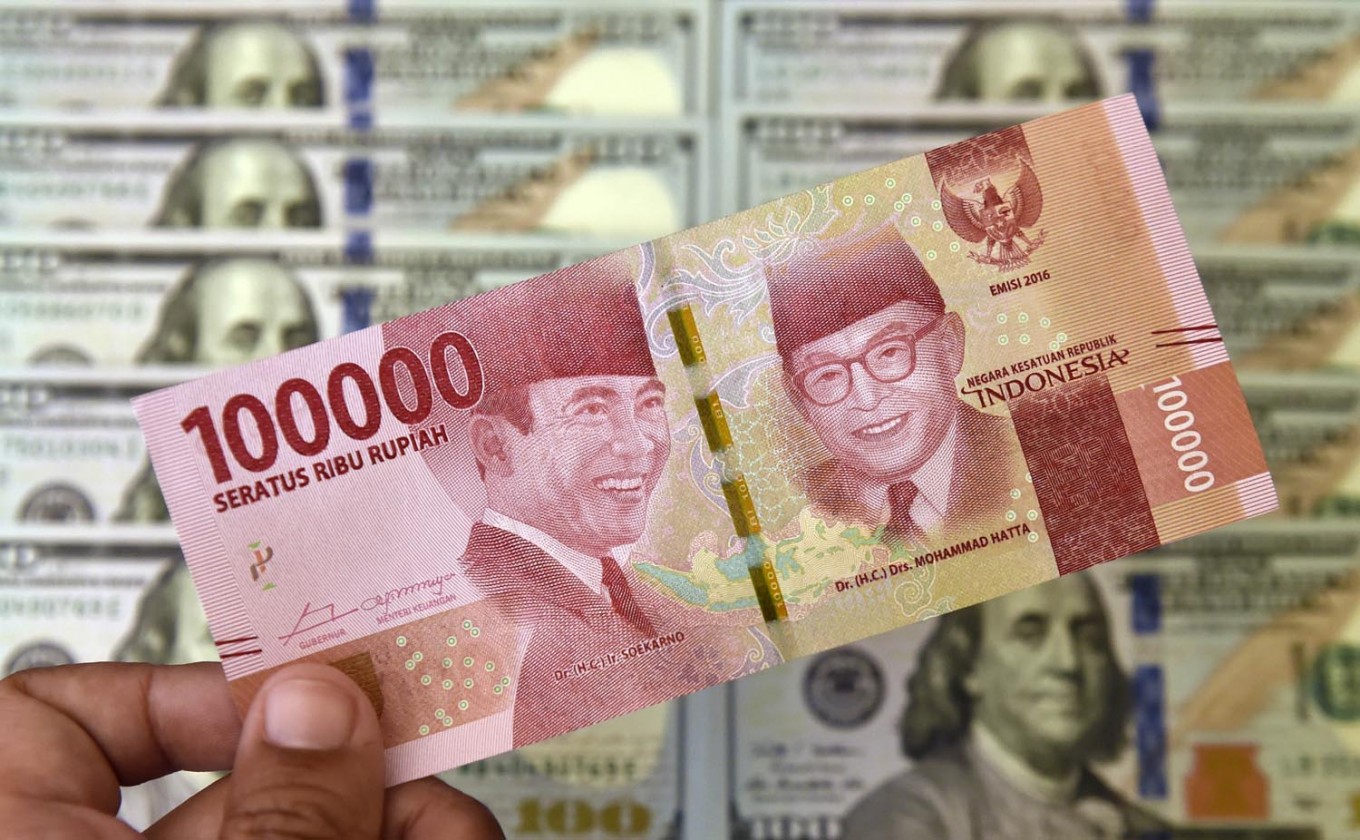Popular Reads
Top Results
Can't find what you're looking for?
View all search resultsPopular Reads
Top Results
Can't find what you're looking for?
View all search resultsCurrent account deficit still looming over rupiah, says analyst
Change text size
Gift Premium Articles
to Anyone
T
he rupiah may have overcome its toughest period last year, but a problem still persisted in the current account deficit, which could haunt the exchange rate if it were not managed this year, an analyst has said.
The country’s current account deficit has swelled to US$8.85 billion or 3.37 percent of gross domestic product (GDP) in the third quarter of 2018, its highest in four years.
The government’s recent efforts to reduce the current account deficit by limiting imports and offering fiscal incentives were not enough, said Budi Hikmat, chief economist and investment strategist at Bahana TCW Investment Management.
Another key move was to boost the production of value-added products rather than merely relying on raw material exports, he said.
“We should start focusing our exports on producing more finished goods instead of exporting raw materials like coal and crude palm oil,” said Budi, adding that finished goods would always be in high demand despite the lower growth in global trade projected for this year.
Another way would be to boost the country’s services sector through vocational training and tourism, he said. Vocational training programs could expand the skilled worker market and thus help drive the manufacturing sector
As for tourism, Budi said improving the sector would attract more foreign visitors to the country and help increase foreign exchange earnings.
These combined efforts should contribute to managing the current account deficit in order to stabilize the rupiah and increase foreign investor confidence, he said.
“[Foreign investors] pay close attention to currency stability,” he said. “So if the rupiah is stable, I am sure we will see more capital inflows in the future.”
The rupiah exchange rate breached the psychological barrier of Rp 15,000 per US dollar in October 2018 due to rising pressures on emerging markets. Nevertheless, the currency strengthened earlier this year due to better capital inflows.
The rupiah strengthened to Rp 13,967 against the US dollar on Thursday, compared to Rp 14,131 seen a day earlier, according to Bloomberg.
Budi said the rupiah would most likely regain its strength this year, as the greenback might be affected by slowed growth in the world’s biggest economy, which recently experienced a prolonged government shutdown.
The current dovish stance of the US Federal Reserve also influenced the rupiah’s appreciation against the dollar, as global markets expected fewer monetary uncertainties in 2019, he added.
Under these circumstances, Budi believed the rupiah would hover at Rp 14,000 to Rp 14,800 per US dollar, well below the government's assumption of Rp 15,000 per US dollar in the 2019 state budget.
Bank Indonesia (BI) Governor Perry Warjiyo also expressed his optimism for the rupiah due to a favorable projection for the Fed rate, which was expected to be raised only twice this year.
Another factor that could further strengthen the rupiah was rising investor confidence in the Indonesian economy, as seen in the influx of foreign funds in the portfolio and real sectors since the fourth quarter of 2018, said Perry.
BI recorded capital inflows of Rp 19.2 trillion (US$1.37 billion) in the equity and sovereign bond markets this year to Jan. 24. The bulk of the inflows helped boost the country’s foreign exchange supply, he said.
Perry also said that the improved forex market – through the central bank's November 2018 introduction of domestic non-deliverable forwards (DNDF) – would positively impact the rupiah this year.
He stressed that Indonesia’s macroeconomic indicators would continue to improve and positively affect the current account deficit.
BI projects the current account deficit to narrow this year to 2.5 percent of GDP, significantly lower than the 3 percent of GDP estimated in 2018.










